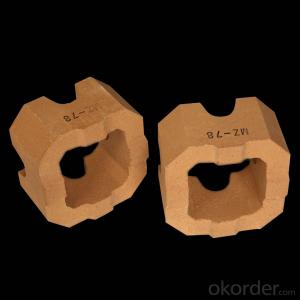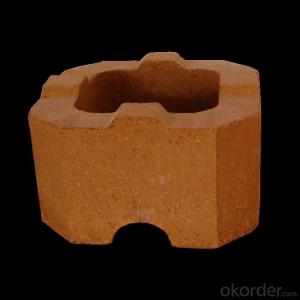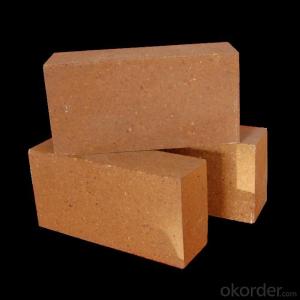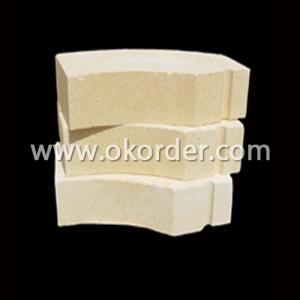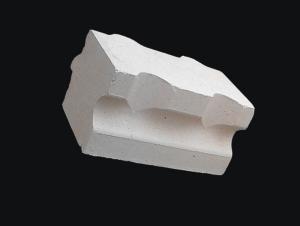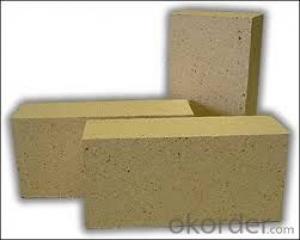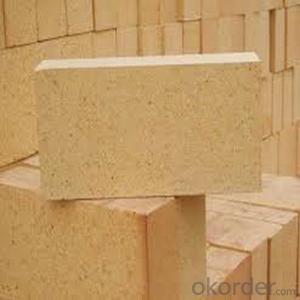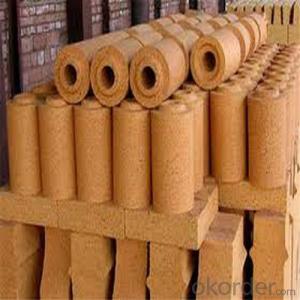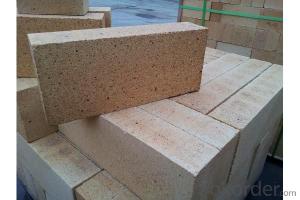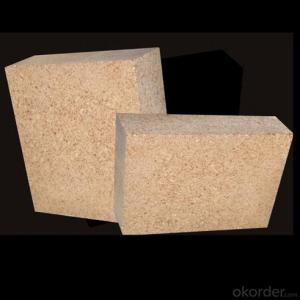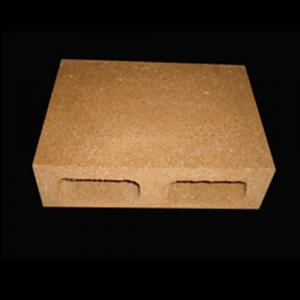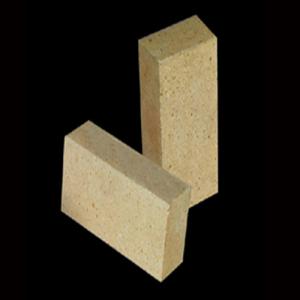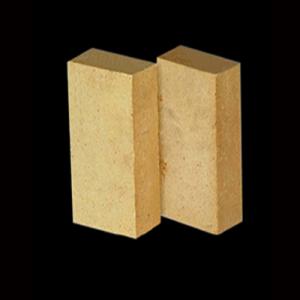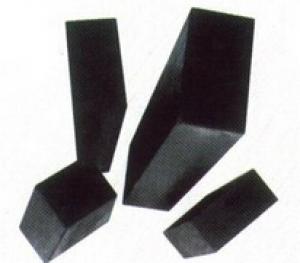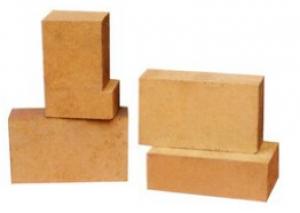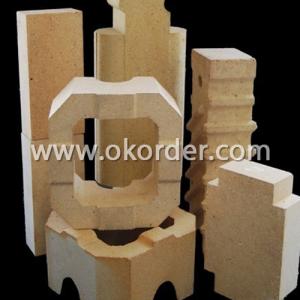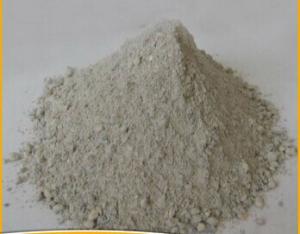Magnesia Brick Refractory brick for Steel Furnace
- Loading Port:
- Tianjin
- Payment Terms:
- TT OR LC
- Min Order Qty:
- 1 m.t.
- Supply Capability:
- 2000 m.t./month
OKorder Service Pledge
OKorder Financial Service
You Might Also Like
Description of Magnesia Brick
Magnesia Brick Refractory brick for Steel Furnace is used in the transition zone and firing zone of large dry method cement kilns. Magnesia Brick is also used in the checker in the glasses furnace, metal-mixer and temperature changed frequently zones in refractory producing furnace.
Specifications for Magnesia Brick
| ITEE | Magnesia Brick | |||||
| HLMZ91 | HLMZ92 | HLMZ95A | HLMZ95B | HLMZ97A | HLMZ97B | |
| MgO%≥ | 91 | 92 | 94.5 | 96 | 97 | 97.5 |
| CaO%≤ | 3.0 | 2.5 | 2.0 | 2.0 | 1.8 | -- |
| SiO2≤ | -- | -- | 2.0 | 2.5 | 2.5 | 1.2 |
| Normal temperature compression strength Mpa p | 55 | 55 | 60 | 60 | 60 | 60 |
| softening temp.C≥ | 1520 | 1540 | 1650 | 1650 | 1700 | 1700 |
| Apparent Porosity%≤ | 18 | 18 | 17 | 18 | 18 | 16 |
Features of Magnesia Brick
Magnesia Brick , it is to point to magnesium stone as raw materials, the Israeli magnesium stone as the main crystal phase, MGO style content in 80% ~ 85% or more of the refractory brick. Its products are divided into two categories: Metallurgical magnesia and magnesia products. Magnesia brick is the main products of basic brick, high refractoriness, of alkaline slag and iron slag has good resistance, high refractory brick is a kind of important. Mainly used in open hearth, oxygen converter, electric furnace and non-ferrous metal smelting, etc.
Typical Application of Magnesia Brick
Furnaces of metallurgy industry, heat treatment furnace.
Furnaces of chemical industry and construction industry.
Furnace of incineration of garbage, recirculating fluidized bed furnace .

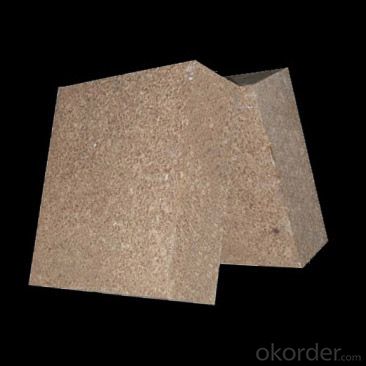
- Q:How much is the bending temperature aluminum silicon carbide brick for torpedo car
- High alumina brick is made of superfine alumina, fused corundum and fused mullite as main refractory materials.
- Q:What is the difference between fireclay bricks and high alumina refractory bricks?
- First of all, there is a difference in the material, one is clay, and one is high aluminum.Also known as clay brick brick, is a man-made small bulk building, clay brick clay (including shale, coal gangue powder) as the main raw material, through mud processing, molding, drying and roasting, solid and hollow.
- Q:What materials are used for roof insulation?
- There are two kinds: one is a kind of cotton insulation board, such as rock wool board, aluminum silicate cotton board, but this is not environmental protection, harmful to life, foam board (this fire safety factor minimum), these relatively cheap.
- Q:Are there any differences between insulating bricks and refractory bricks?
- The insulation performance of thermal conductivity of insulating brick in general 0.2-0.4 (average temperature 350 - 25 DEG C) w/m.k, and the thermal conductivity of refractory brick in 1 (the average temperature of 350 - 25 DEG C) above w/m.k, which can obtain the insulation performance of insulating brick than refractory brick insulation performance is much better.
- Q:What are the characteristics of high alumina bricks?
- High thermal stability, fire resistance above 1770. Slag resistance is good, used for masonry steel smelting furnace, glass furnace, cement rotary furnace lining. High R.U.L, low creep high alumina brick with high grade bauxite, fused corundum, fused mullite as main raw material of high-grade refractory materials.
- Q:What is the standard classification of high alumina bricks and high alumina bricks?
- Refractory brick is non-metallic materials can be classified according to a kind of inorganic material, high aluminum brick, clay brick, magnesia brick, corundum brick, mullite bricks, silicon carbide materials such as brick, high alumina brick is used as a relatively wide range of products in accordance with the refractory brick high alumina refractory materials by high aluminum brick is generally divided into Al2O3 content three: I - II - >75% Al2O3 content; the content of Al2O3 is 60 ~ 75%; III - Al2O3 content from 48 to 60%.
- Q:What are the reasons for the decline in the performance of high alumina bricks when we use high alumina refractory bricks?
- Quality requirements for aluminium bricks of different grade. 2, high aluminum powder and high alumina aggregate and other materials of reasonable proportion, to reach the production requirements.
- Q:The difference between clay bricks and clay bricks
- Sintering bricks do not have clay bricks, so sintering bricks are made of stone. Clay brick is clay cooking, two yo, qualitative difference, but the appearance and color almost, but the quality is very different, life expectancy is also a great gap.
- Q:What is the apparent porosity of high alumina brick?
- In the production of high alumina bricks in addition to the entity, there are many different sizes and shapes of different pores, pores can be divided into three categories: one side closed the other side and the outside world is called open pores, closed in the product not communicated with the outside is called closed pores, penetrating through pores called the few products.
- Q:What is the heat preservation material used in a laboratory furnace?
- Thermal insulation cotton is a high-purity clay clinker, alumina powder, silica powder, chromium sand and other raw materials in the industrial furnace melting at high temperature, forming fluid. Then, compressed air is used to blow or use the wire throwing machine to turn the yarn into a fiber shape. After the cotton collector is collected, the cotton is formed into a heat preservation cotton.The high alumina brick is usually made of high alumina clinker with small amount of clay. After grinding, the high alumina brick is poured and shaped in the form of slurry by the way of gas generation or foam, and it is burnt at 1300~1500 DEG C. Sometimes industrial alumina can be used instead of some bauxite clinker. Used for lining and insulation of masonry kilns, as well as for areas where there is no strong, high temperature molten material erosion and erosion. When contacting the flame directly, the surface contact temperature shall not be higher than 1350 degrees centigrade.
1. Manufacturer Overview |
|
|---|---|
| Location | |
| Year Established | |
| Annual Output Value | |
| Main Markets | |
| Company Certifications | |
2. Manufacturer Certificates |
|
|---|---|
| a) Certification Name | |
| Range | |
| Reference | |
| Validity Period | |
3. Manufacturer Capability |
|
|---|---|
| a)Trade Capacity | |
| Nearest Port | |
| Export Percentage | |
| No.of Employees in Trade Department | |
| Language Spoken: | |
| b)Factory Information | |
| Factory Size: | |
| No. of Production Lines | |
| Contract Manufacturing | |
| Product Price Range | |
Send your message to us
Magnesia Brick Refractory brick for Steel Furnace
- Loading Port:
- Tianjin
- Payment Terms:
- TT OR LC
- Min Order Qty:
- 1 m.t.
- Supply Capability:
- 2000 m.t./month
OKorder Service Pledge
OKorder Financial Service
Similar products
New products
Hot products
Related keywords

